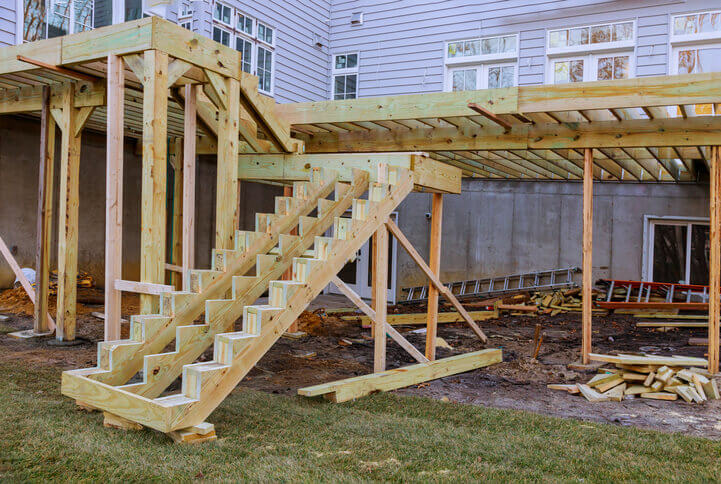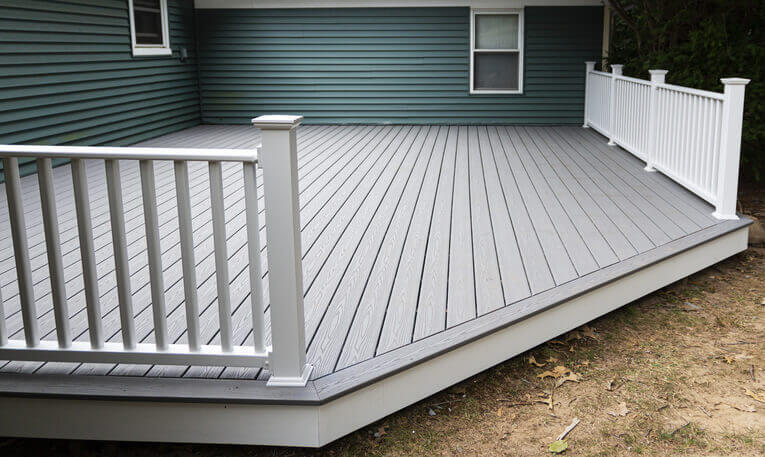The Pros and Cons of the Best Decking Materials
As a resident of the state of Maryland, you understand that there is no better place to be in warmer months than lounging on your back deck enjoying the weather and soaking in the sun. Whether you want to replace your old deck, or put in a new one, this could be the perfect time to do it. Don’t let winter weather stop you from moving forward with your project. In fact, if you start working on it now, you can have your dream deck ready by spring. But before you begin building, you need to decide the best decking materials to use.
Choosing the Best Decking Materials for Your Maryland Home
These are some of the main factors to consider when selecting the right materials for your deck.
- Cost: How much are you willing to spend? Is it worth investing in a longer-lasting material to save money on maintenance in the long run?
- Durability: Maryland has a temperate climate, meaning that you need decking materials that can tolerate hot summers and cold winters, rainy seasons, and sunlight.
- Aesthetic quality: What kind of look you want for your deck? What feel do you want for your outdoor space?
Once you answer these questions, you will have a better idea of which materials to use and can get started with your build.
The Pros and Cons of the Best Decking Materials
The best materials for decks include these popular options: pressure-treated lumber, wood composite boards, and PVC decking. Here is a brief comparison of the pros and cons of each material:
1. Pressure-Treated Wood

Hands down, wood decking is the overwhelming choice for decks by homeowners.
Classic wood decking is the most popular material for decks.
Pros: Pressure-treated wood is generally the cheapest choice. It provides a natural and traditional look while giving you plenty of opportunities to personalize your deck through a variety of wood types, stains, and paints.
Cons: Wood decks require annual maintenance, especially in direct sunlight and heavy precipitation. To prevent decay and rot, the boards must be scrubbed, sanded, and sealed. You may find maintenance to be quite costly, and the wood will eventually need to be replaced no matter how well you treat it.
2. Wood Composite

If you are looking for your investment to last, wood composite is a great choice with a beautiful finish.
Wood composite boards are made with a mixture of polyethylene and wood particles. You can also find eco-friendly versions made with sawdust and recycled plastics.
Pros: Composite decking never splinters, splits, or rots. You may see some weathering, but wood composite requires no care. In the long run, it could be a better investment over pressure-treated wood.
Cons: Wood composite costs twice as much as regular wood and comes in fewer color varieties. It also looks and feels more like plastic than wood.
3. PVC Decking

The biggest difference between composite and PVC is that PVC is not solid. It is actually called polymerization of the vinyl chloride monomer (PVC for short).
PVC decking is completely synthetic and made from the same materials as plastic fencing.
Pros: PVC is a lightweight material that needs no maintenance or finishing. In addition, you can have it “capped” so that it looks and feels more like wood.
Cons: This is the most expensive option and appears the least like a traditional wood deck (however, some people may prefer the modern look).
Design the Perfect Deck for Your Home with 7th State Builders
Not sure which is the right material for your deck? No need to fret. At 7th State Builders, we will work with you to decide the right materials, style, and location for your deck. We’ll then work with you to bring it all together. Contact us today and we will help you realize the perfect deck for your Maryland home.



